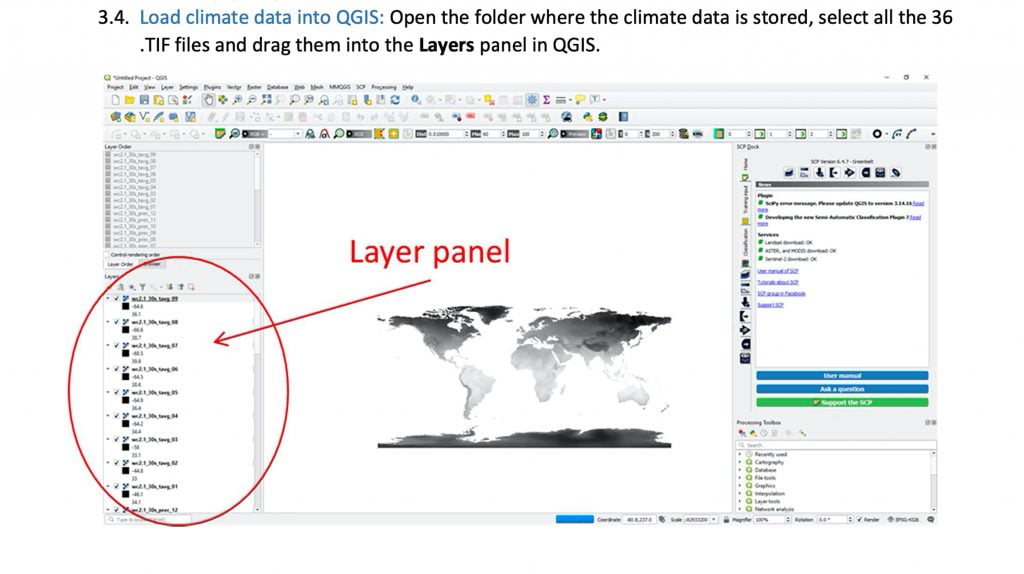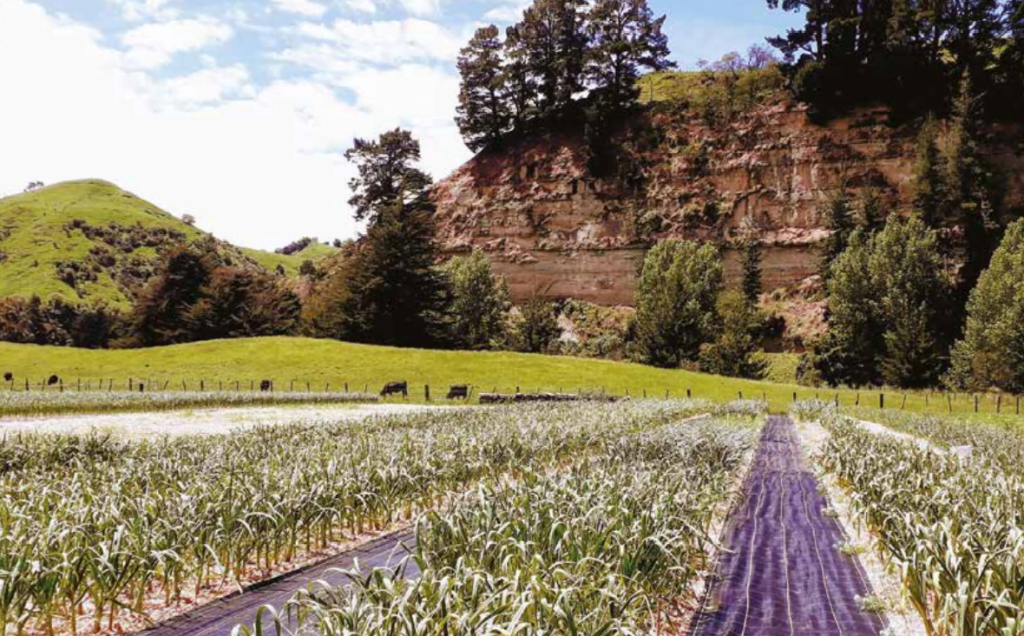Future-Proofing the Hill Country
Farming the hill country can be hard. Getting hold of free open-access software tools and data to evaluate crop and market options for added horticulture ventures can help simplify options.
Farming in the rugged, but beautiful, central North Island hill country can be challenging at times. It’s dry, the soils are poor, and snow in winter is common. But it is a lifestyle that many farmers cherish and want to preserve.
Concerned that the local farming community’s way of life could be threatened with challenges to sheep and beef farming five or six years ago, Taihape farmer Rita Batley felt that change was needed. More recently, an aversion to seeing pines planted in the area has been behind growing interest in diversification from her community, with the aim of making farm businesses more financially sustainable.
To future-proof the rural community, they needed to inspire the young and look at what other income strands would suit their land. Rita teamed up with rural consultant and researcher Dr Liz Dooley, now working for PerrinAg Consultants based in Rotorua, and together they looked at options.
Rita and some like-minded farmers then formed a group under the Red Meat Profit Partnership Action Network (RMPP) looking to diversify into sustainable horticulture on some of their land.
Rita and friend Vanessa Witt planted up a plot with 20,000 garlic plants that are grown organically using permaculture principles on some of the precious, but relatively infertile, flat land on Rita and husband Peter’s sheep and beef farm. Over the past three years they have gradually enriched the soil, developing a new plot each year as they rotated the garlic crop.
Looking at the possibility of organic certification they learned they needed three other successful crops to come in behind the garlic to make up a four-year rotation. “It’s hard work, and while the garlic sells well it isn’t viable on its own,” Rita says.
The diversification challenge
Rita and others in her group are actively seeking diversification, but encouraging less interested farmers is not straightforward. Farmers take pride in their own resourcefulness to get things done without a big cash outlay, so forking out a lot of money right from the start to find a site-specific crop may be a hard ask for many dabbling with the idea of diversification.
Getting hold of information about crops that suited their lifestyle and aspirations, along with market options, and that didn’t also cost an arm or a leg could be key.
Once the basic groundwork was done the landowner could then decide if they wanted to seriously move forward with a more detailed analysis of a venture, with the associated costs of that analysis made available. Coming up with tools that could do all of that was the challenge funded by the Our Land and Water Rural Professionals Fund led by the project team of Liz Dooley, DJ Apparao, Iona McCarthy and Carol Mowat.
Any crop data used and other information sources across the project needed to be free and open-source, without proprietary software packages or licensing required. Any tools developed by the team will be free for others to use.
The process also needed to consider the challenges that farmers often had with internet access. However, with high-speed satellite internet connection provider Starlink now on the scene connectivity may improve, for South Islanders at least.
Down to business
DJ Apparao put together a tool – a piece of code – that would allow a crop database to be explored using the geographic information system, QGIS, to find crops suited to a given area, with RStudio included to enable statistical analysis.
A protocol to install and run this suite of software was also collated so the process could be replicated by landowners and rural professionals on their own personal computers (see Figure 1).

The main database used by the crop selection tool was EcoCrop, a United Nations Food and Agriculture Organisation database, which covers climatic suitability for over 2,500 crop plants alongside global climate data.
Monthly rainfall and temperature data can be searched for on the EcoCrop database to match a crop’s acceptable temperature and total rainfall range, and the length of the crop cycle. The model simulates different possible growing seasons and selects the most suitable. From there, EcoCrop suggests the highest value crop and assumes the landowner would plant during the most ideal season.
World yield and export price were gleaned from publicly available data on the global crop yield and the freighton-board (FOB) export price by crop and country, from online databases at Earthstat and UN Comtrade, respectively. Published literature and an online database at Tridge filled in some gaps.
Industry-scale data to calculate farmgate returns were a bit scarce, probably due to commercial sensitivity, so the proportion of farmgate returns from global market returns were estimated using industry-scale data for fresh kiwifruit exports. If individual farmers were privy to actual farmgate prices derived from market returns through other sources of information, they could use that data instead.
Several hill country farms in two areas in the Taihape region were chosen as test sites, with the software put through its paces for cropping options. This resulted in 49 possible crops for each of the two sites looked at.
How the product would be used (fresh, processed, dried) and estimated time to production for trees were all compared between crops, along with world yield and export price and estimated farmgate returns per hectare, to give a rough estimate of their respective values.
Armed with the crop selection tool, a fairly computer-competent landowner would also be able to navigate the process alone, Liz Dooley says. “Some farmers may find it easier to work with a consultant or get them to run the tool, especially if not computer savvy. And consultants may find the tool and process useful for working with clients who approach them to look at options.”
Several hill country farms in two areas in the Taihape region were chosen as test sites, with the software put through its paces for cropping options. This resulted in 49 possible crops for each of the two sites looked at.
Two sets of crop suitability options were generated in this project – one with irrigation and one without. A need to irrigate on a site changed how suitable some crops were shown to be for those sites. Liz says that as many farms would not have irrigation, that option would be unnecessary for most.
Multi-criteria decision-making
A multi-criteria decision-making support tool was then used with the crops. This helped the farmers sort through the crops, as well as assisted in applying their personal and business priorities, aspirations and concerns to narrow the number of suitable crops.
Unsurprisingly, financial returns, labour needs, processing requirements and risk were seen as most important when considering each crop. Given the limited flat land on the farms, ventures that had the potential for high returns from a small area garnered the most weight, except if they needed to fit in with an existing crop rotation.
Surprised at the range of crops suited to their land, the greatest interest was in medicinal crops, fruit trees, fruit bushes and nut trees – of which there were nine medicinal crops, 10 fruit trees and five nut trees. Although there were 10 vegetables and 15 suitable grains, only garlic and horseradish (and arable crops quinoa and hemp) were earmarked for further investigation. The whittling down process resulted in five to 11 crop options for each farm.
Surprised at the range of crops suited to their land, the greatest interest was in medicinal crops, fruit trees, fruit bushes and nut trees
Building value
Liz says that some of these crops were then used as case studies to demonstrate how to develop a value-chain-based business case, looking at what questions farmers would need to ask and what they needed to understand in the evaluation of a new enterprise.
For this, a business case incorporating Porter’s ‘five forces model’ was used on a potential crop. Porter’s model looks at the barriers to entry on the market for a product, the threat of substitutes, the bargaining power of suppliers, the bargaining power of buyers and competition from existing companies. Alongside this, an analysis of business strengths, weaknesses, opportunities and threats in the market was undertaken.
Open-access research and science reports to support the business case came from Google Scholar, with other general information found through a Google search. This would help the farmer or their consultant to figure out if the crops were feasible and warranted a closer look.

Some takeaways from the process
Having the founders of Kiwi Quinoa in their RMPP group, along with another start-up, Hinterland Foods run by young farmers Sarah and Thomas Wells was a big influence on the willingness and confidence of some to look at diversification seriously, Rita says.
High-returning quinoa was already being grown in the area by entrepreneurial young local farmers, Jacqui and Dan Cottrell, and helped to raise the scoring for this uncommon crop. Horseradish grew like a weed in the area, so there were no concerns about how it would perform.
For some, choosing a crop with little understanding of it locally, and having to research it from scratch, could be a hard ask. But with the tools developed on hand, these crops could present some unusual opportunities.
“Going through a business case format helps provide people with the tools to identify and explore these opportunities,” Liz says. “Some may take the opportunity and risk to give it a go.”
Finding a market and value chain is often the hardest step, and growers should be confident they exist before embarking on change.
Clearly not needed for some ventures, banding together to grow the same crop for others may provide the scale for a value chain to form. Finding a market and value chain is often the hardest step, and growers should be confident they exist before embarking on change.
Rita Batley and Vanessa Witt are still weighing up their options for their three rotation crops. Echinacea and arnica are used in the organics industry and are strong contenders, with liquorice also under the microscope. Having sourced seeds for all three from Germany, they will do a germination trial this spring to see if they will grow in high country conditions. “If we establish that we can grow some or all of them, we will then have to find a market before we plant commercially,” Rita says.
Next steps
- Landowner tools to identify potential climate suitable crop options are needed for land use diversification. These need to be open-source, open-access and easy to use under poor internet connectivity.
- Concise, reliable and relevant information on crop options is required. There is a role for central and local government to build on existing open-data initiatives to improve the access and content of New Zealand-specific spatial datasets.
- An MCDM process and model that is straightforward, relatively quick to use and freely available to farmers and advisers could be developed.
- While a proof of concept was created, work needs to continue to make the process more accessible and understandable.
- This work needs to be connected to markets and value chains to make the prospect of farming different crops successful.
– Delwyn Dickey for Our Land and Water National Science Challenge
More information:
- Rural Professionals Fund 2020-21
- Download PDF
- All text in this article is licensed for re-use under Creative Commons Attribution 4.0 International (CC BY 4.0)
Author
 View Our Strategy Document 2019 – 2024
View Our Strategy Document 2019 – 2024




Leave a Reply